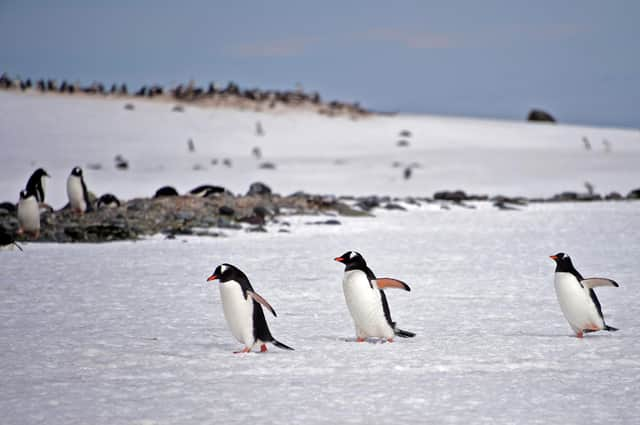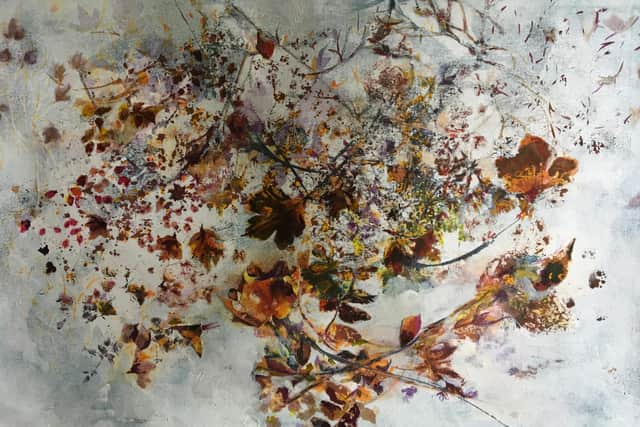Covid lockdown reminded us of how nature is both an artistic and intellectual inspiration – Annie Broadley


During lockdown, the ability to go for short walks was for many a source of solace, as earlier in the year we saw the spring flowers appearing and the trees beginning to bud. Now with most restrictions lifted, we return to Scotland’s hills, lochs and wild places, delighted to be among them once again.
When writing about nature in the third decade of the 21st century however, it is hard to experience its beauty and to delight in the pleasure that it gives us without also thinking about all the threats to its survival.
Advertisement
Hide AdAdvertisement
Hide AdIn November, Glasgow will host the United Nations’ Cop26 climate conference. I believe that to halt the destruction caused by escalating wildfires, floods and deforestation and the huge decline in the number of wild animals and birds, we need to rethink our relationship with the natural world.
Our harmful impact on it became quickly apparent during lockdown when, in the absence of normal human activity, we saw how quickly nature began to regenerate itself.
Ecologist and author Richard Mabey summed this up perfectly when he said that nature is doing “marvellously well without us”. It is vital that we cease to treat nature as an infinite resource which is at our disposal and ours to use at will. We should take from it only what it can sustainably give.
The beginning of the 19th century saw a flowering of the Romantic movement in the arts. It was a response to the rationalism of the Enlightenment, with its emphasis on logic and intellect, which preceded it.


Nature became vitally important particularly in art and poetry and writers such as Wordsworth and Thoreau wrote of the spirituality that arose from the affinity they found in nature.
In art, landscape painting became important both here and on the Continent. In Scotland, Alexander Nasmyth began to paint landscapes and is considered to be the 19th-century initiator of a tradition which has continued down to the present day.
In fact, nature is a common theme in both Scotland’s art and poetry. I look forward to visiting the Turner watercolours which are exhibited at the Scottish National Gallery in January each year.
No matter how many times I return, I still stand in awe before them. In one work, nature is all movement, wildness and drama with its endlessly shifting shapes, while another draws me into the serenity at its heart.
Advertisement
Hide AdAdvertisement
Hide Ad

From the lyrical 18th-century Epistle to Davie – In days when daisies deck the ground, And blackbirds whistle clear, With honest joy our hearts will bound… – by Robert Burns through to poets of the present day, nature is a recurrent theme.
In the introduction to the 2005 anthology of his poetry, Norman MacCaig is quoted as saying “landscape is my religion” and animals, birds and reptiles make frequent appearances.
In the poem Stars and Planets, he describes the beauty of the night sky, then subverts the poetic imagery in the last verse: “It’s hard to think that the Earth is one – , This poor sad bearer of wars and disasters, Rolls-Roycing round the sun with its load of gangsters, Attended only by the loveless moon.”
Music too looks to the natural world for inspiration. Orkney-based composer the late Peter Maxwell Davies spent three weeks on the British Antarctic base at Rothera.
Afterwards he composed his Antarctic Symphony, distilling the essence of what he called “this terrible, hostile wonderland” into the piece. I visited Antarctica in 2011 – it truly was the experience of a lifetime and something I will never forget. I loved the remoteness – the silence broken only by the wind, the penguin cries, the sea breaking on the rocks and the occasional crack of splintering ice, with sea, snow, ice and sky spreading as far as the eye could see.
That there are creatures here which have managed to make such amazing adaptations in order to survive these extreme conditions fills me with wonder and makes me feel how very insignificant human beings are by comparison.
I have tried to convey these feelings in my paintings of the landscape as well as the more intimate studies of the Antarctic wildlife. On an ecological note, current ice loss in Antarctica is seen as a key indicator of climate change.
For me, a connection with nature is fundamental to my own well-being and my work as an artist. The changing seasons with their colours, scents and sounds have a unique impact upon my moods, thoughts and feelings.
Advertisement
Hide AdAdvertisement
Hide AdStilled by sitting by a gently flowing river or overawed by the majesty of a thunderstorm, I find that nature communicates with an immediacy unparalleled by anything else.
The infinite variety of shape and form within nature fascinates me, like the curve of a leaf, the complicated twisting of roots, the patterns made by falling leaves. Much of my work is based on an observation of nature in one form or another as my starting point for a painting often grows out of drawings from my sketchbooks.
The experience of lockdown when we had little contact with nature served only to emphasise its importance. In the scheme of things, this was a relatively short period to be out of touch with nature. How much worse will this be if it is lost forever?
Annie Broadley is an Edinburgh-based artist. To see more of her work visit her website, anniebroadley.com.
A message from the Editor:
Thank you for reading this article. We're more reliant on your support than ever as the shift in consumer habits brought about by coronavirus impacts our advertisers.
If you haven't already, please consider supporting our trusted, fact-checked journalism by taking out a digital subscription.
Comments
Want to join the conversation? Please or to comment on this article.
